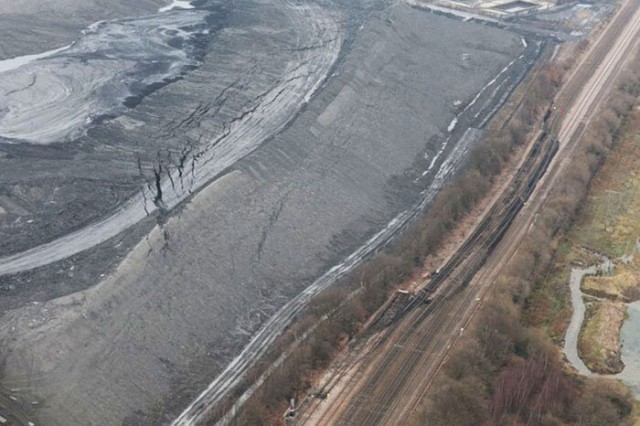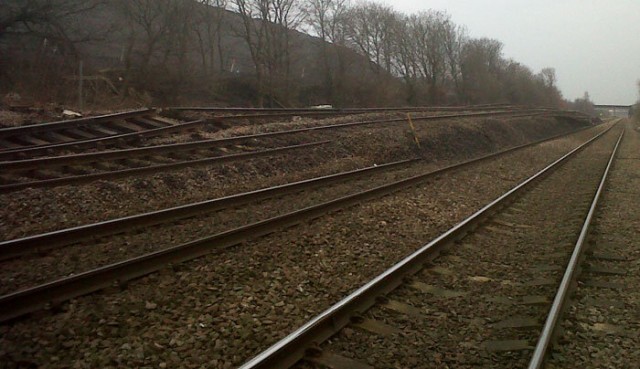13 February 2013
An unusual colliery landslide yesterday – Hatfield Stainforth in Northern England
Posted by Dave Petley
In the UK there is a very high level of sensitivity about colliery landslides because of the Aberfan disaster over 40 years ago. The result has been a huge effort to prevent and mitigate landslides associated with coal mines, such that colliery landslides are now unusual. Thus, the very large landslide at Hatfield Stainforth on the outskirts of Doncaster is very surprising. This may well be the largest and most significant landslide in the UK for a decade or more, even though the mainstream media has yet to catch up with it. You will see what I mean when you see the aerial photograph released by Network Rail via Twitter last night, which says it all:
The spoil is from the Hatfield Colliery, which reopened in the last few years. Note at the crown of the landslide the multiple arrays of tension cracks; the lack of lateral scarps (so far…); the toe bulge and the enormous deformation in the railway lines at the toe. Note that this is an active line, which unsurprisingly is now closed. The following Network Rail image shows why:
It is hard to know exactly what has happened here, but the size and geometry of the toe bulge might suggest a bearing capacity failure, when the ground supporting the slope fails. In this case the ground has been loaded by the spoil heap,, and my hypothesis would be that a failure surface has developed through it, allowing a quasi-rotational failure to develop. Whatever the cause, managing the slope is going to be very difficult. It will not be possible to simply excavate the material around the railway line as this would remove support from the toe, promoting further movement. It is more likely that material will have to be removed progressively from the crown area, but very carefully.
I would imagine that the deformed lines will be out of action for some considerable period of time and I am sure that work will also be going on to ensure that no other failures are developing in the spoil heap. A lot of people are going to be very busy dealing with this.




 Dave Petley is the Vice-Chancellor of the University of Hull in the United Kingdom. His blog provides commentary and analysis of landslide events occurring worldwide, including the landslides themselves, latest research, and conferences and meetings.
Dave Petley is the Vice-Chancellor of the University of Hull in the United Kingdom. His blog provides commentary and analysis of landslide events occurring worldwide, including the landslides themselves, latest research, and conferences and meetings.